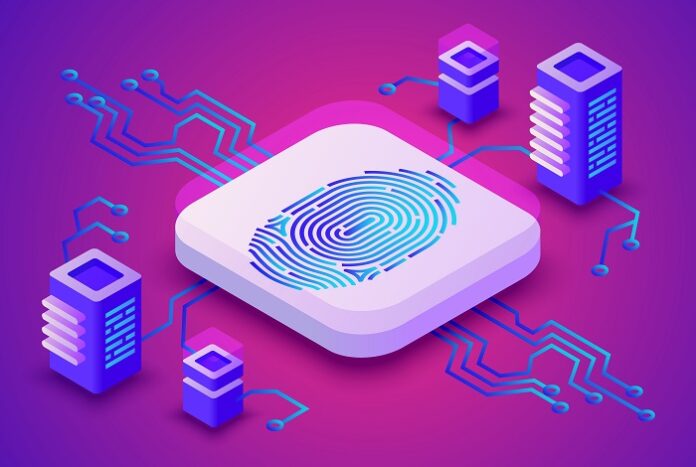Rapid technological development makes strong security measures more vital than ever. Traditional authentication methods like passwords and PINs are readily hacked or stolen. Biometric security offers a novel and powerful technique to solve these problems. Biometrics uses people’s physiological and behavioral attributes for safe and reliable verification. Biometric security has evolved, and this page discusses its history, usage, benefits, problems, and future.
For examples of 10 fingerprint scanner to buy, click on the link.
Security biometrics progression
Using fingerprints for identification on clay tablets stretches back to ancient cultures, where biometrics originated. The later part of the nineteenth century saw fingerprint identification usher in biometric security. Technological advances have made biometrics more applicable, allowing for the inclusion of more physiological and behavioral variables to increase accuracy and safety.
The most common biometrics are fingerprint, iris, face, and voice recognition, although gait and keyboard dynamics are also utilized. Each modality has unique advantages and downsides, resulting in diverse usage.
Potential Uses of Biometric Security
Biometric security has revolutionized identification and verification in several sectors. Biometrics affects key areas like:
- Access Control Systems: Access to restricted areas may employ biometric authentication. Biometric identification technologies like fingerprint and iris scanners are used to limit access to restricted regions.
- Portable electronics like smartphones: Modern telephones use fingerprint scanners or facial recognition software for security. This makes things simpler, safer, and more enjoyable for users.
- Banks and investments: Banks increasingly embrace biometric authentication technologies like facial recognition and fingerprint scanning to protect transactions and client access. This combats identity fraud and financial data theft.
- Medical care: Healthcare uses biometrics to preserve patient privacy. Fingerprint or palm vein identification prevents healthcare personnel from accessing electronic health records.
- Immigration/Border: Biometrics are used increasingly in immigration and border control. Facial recognition and fingerprint scanning may increase border security and speed up immigration.
Advantages of Biometric Security
- Uniqueness: Human uniqueness is a selling factor of biometric security. Instead of passwords or PINs, biometric features are unique to each person and impossible to reproduce.
- Easy access: Users find biometric authentication more convenient than other methods. Fingerprint or face recognition may simplify authentication and enhance user experience. No more difficult passwords to remember.
- Precision and Dependability: Biometric technology usually provide reliable and accurate findings. The uniqueness of biometric characteristics reduces false positives by restricting access to authorized users.
- No-refutation zone: Biometric ID provides non-repudiation, thus a person cannot dispute their actions. Identification is successful when a biometric trait is linked to a transaction or behavior.
You can visit Biometric Supply online store for more options to buy.
Challenges in Biometric Security
Despite its advantages, biometric security has certain drawbacks. These issues must be addressed to utilize and improve biometric technology extensively.
- Confidentiality concerns: People worry about privacy when biometric data is captured and retained. Biometric data is often kept private for fear of abuse or unwanted access.
- Possible Spoofing: Malicious actors may spoof Some biometric systems using duplicate or manipulated photos. Strong anti-spoofing measures are needed.
- Cohesion and harmony: There are no standards, therefore, biometric technology may be hard to integrate with current infrastructure. Maintaining system compatibility and integration is a constant challenge.
- Affordable and Convenient: Biometric security may be expensive, particularly when utilized widely. Inclusion concerns arise because certain biometric technology is inaccessible to disabled individuals.
The Future of Biometric Security
Biometric security will thrive with ongoing research and development to address present concerns and add new capabilities. Some important changes and technologies that will shape biometrics’ future are:
- Other Biometric Methods: Combining biometric modalities like facial recognition, fingerprint scanning, and iris scanning may increase security and accuracy. Multimodal biometrics provide greater, more extensive verification.
- AI integration: AI algorithms improve biometric accuracy and versatility. AI might revolutionize biometric identification by learning and adapting to human physiology and behavior.
- Continued Verification: Continuous authentication tracks biometrics while users interact, going beyond one-time authentication. Reduced risk of unauthorized access allows continuous and dynamic identification assessment.
End Note
Biometric security has revolutionized identification verification. The uniqueness of biometric characteristics boosts security in access control, healthcare, and financial organizations. Privacy problems and spoofing susceptibility are constantly addressed by study and technology.
AI, multi-modal biometrics, and blockchain-based security will improve biometric systems. Biometric security helps solve issues, safeguard privacy, and promote inclusiveness, establishing the framework for future technical advances in digital identification.
Image by vectorpouch on Freepik





